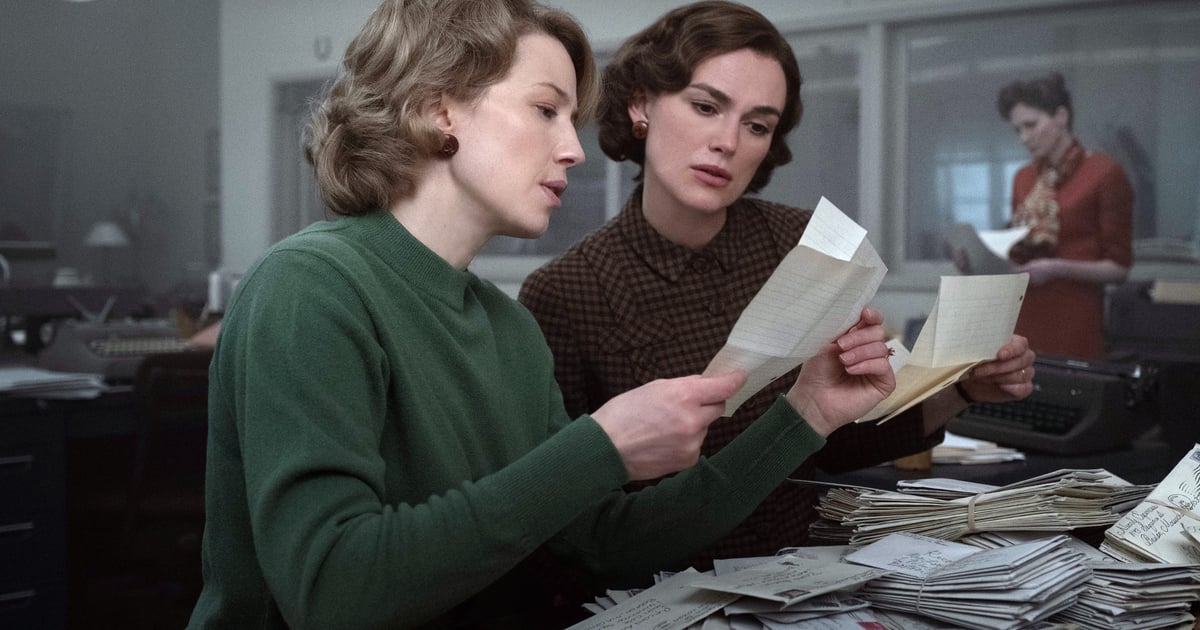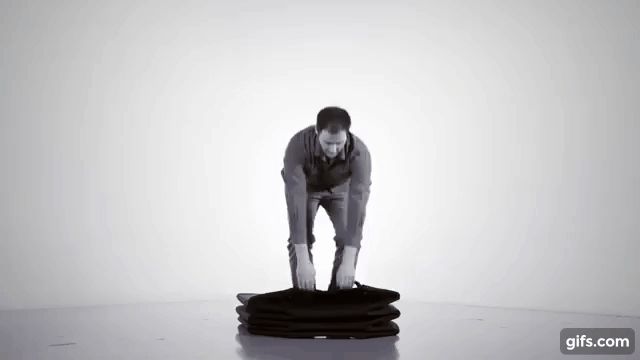The Unsettling Story Behind Hulu's True Crime Original "Boston Strangler"
Image Source: Everett Collection The heinous crimes of the Boston Strangler are at the center of Hulu's latest crime thriller, "Boston Strangler," which hits the platform on March 17. The original film stars Keira Knightley as Loretta McLaughlin, a Boston Record American investigative reporter determined to solve a string of sexually motivated serial killings in Boston in the 1960s. Along with fellow reporter Jean Cole (Carrie Coon), McLaughlin covered the killer's 13 murders until his eventual arrest in 1964. The Boston Strangler has been referenced in entertainment several times since his crimes occurred, most notably in the 1968 film "The Boston Strangler," starring Tony Curtis and Henry Fonda. Still, the story itself - including the women that helped bring it to light - has gotten lost with the high-profile crimes that succeeded it. Ahead of the upcoming "Boston Strangler" premiere, here is the true story behind the murders that shook Boston. What Did the Boston Strangler Do? On June 14, 1962, the body of 55-year-old Anna Slesers was found in her Boston-area apartment with the belt of her bathrobe intricately tied around her neck. According to the Boston Globe, an investigation into Slesers's death determined she had been sexually assaulted and strangled. Still, at the time, the crime was isolated and thus garnered little attention from authorities, the media, and the residents of Boston. A little over two weeks later, on June 30, 1962, 68-year-old Nina Nichols was found dead in her Boston apartment with pairs of stockings tied around her neck and evidence of a sexual assault. The same day, another woman, 65-year-old Helen Blake, was found dead in a similar fashion to Nichols, sexually assaulted and strangled with a tightly-knotted stocking and bra strap. At the time, investigators were wary of connecting Blake to the other murders, as she lived in Lynn, Massachusetts, over 15 miles from the Boston-area killings. However, in a 1992 Boston Globe article (via The Chicago Tribune), Loretta McLaughlin noted that the Strangler's next victim, 75-year-old Ida Irga (who was murdered in August 1962), amped up the investigation and drew attention from the media. For the next two years, the Boston Strangler would terrorize the women of Boston and be responsible for the death of 13 people, with the ages of the victims ranging from 19 to 85. The last victim, 19-year-old Mary Sullivan, was found on Jan. 4, 1964, but the perpetrator behind her murder and the other killings wouldn't be captured until almost a year later. How Did the Boston Strangler Get Caught? Image Source: Getty In Nov. 1964, 30-something Albert DeSalvo was arrested for rape after a victim identified him from a photo provided by police. She was one of the dozens of Boston-area women sexually assaulted by the same perpetrator dubbed the Green Man throughout the early 1960s, according to History. DeSalvo worked as a maintenance worker, which would explain how he would enter each victim's home without force. Following his rape charge, he was declared mentally unfit for trial and imprisoned at the Center for the Treatment of Sexually Dangerous Persons in Bridgewater, Massachusetts. During his stay, DeSalvo confessed to fellow inmate George Nassar, a convicted murderer, that he was the Boston Strangler. After DeSalvo described the killings in detail, Nassar told his lawyer, F. Lee Bailey, which made investigators zero in on him as a suspect and elicit more confessions. What Happened to Albert DeSalvo? With no physical evidence linking DeSalvo to the crime at the time and a rape trial complicated by his competency and psychological state of mind, the only clear suspect was never charged with any crime linked to the Boston Strangler murders. Instead, DeSalvo was sentenced to life in prison for the Green Man rapes in 1967, according to History. While carrying out his sentence at Walpole state prison, DeSalvo was stabbed to death by two of his inmates on Nov. 25, 1973, The New York Times reported. Despite his confession, DeSalvo's identity as the Boston Strangler was questioned for decades. Finally, nearly 40 years after his death, DNA from a water bottle provided by Tim DeSalvo, Albert's nephew, matched the DNA found at the scene where Mary Sullivan was found, as reported by ABC News. What Happened to Loretta McLaughlin? McLaughlin continued her writing career after the Boston Strangler murders. She took an interest in psychology and medical topics. She started working as a medical news specialist with the Boston Globe in the 1970s, according to her 2018 obituary in the Boston Globe. She notably drew attention to the AIDS health crisis in the '80s and '90s and criticized leaders for politicizing the growing epidemic. Later in her career, she became the Boston Globe's editorial page editor and retired when she was 65. At the heart of her job was McLaughlin's dedication to giving a voice to stories and people that were often brushed off or forgotten. To


Image Source: Everett Collection
The heinous crimes of the Boston Strangler are at the center of Hulu's latest crime thriller, "Boston Strangler," which hits the platform on March 17. The original film stars Keira Knightley as Loretta McLaughlin, a Boston Record American investigative reporter determined to solve a string of sexually motivated serial killings in Boston in the 1960s. Along with fellow reporter Jean Cole (Carrie Coon), McLaughlin covered the killer's 13 murders until his eventual arrest in 1964.
The Boston Strangler has been referenced in entertainment several times since his crimes occurred, most notably in the 1968 film "The Boston Strangler," starring Tony Curtis and Henry Fonda. Still, the story itself - including the women that helped bring it to light - has gotten lost with the high-profile crimes that succeeded it. Ahead of the upcoming "Boston Strangler" premiere, here is the true story behind the murders that shook Boston.
What Did the Boston Strangler Do?
On June 14, 1962, the body of 55-year-old Anna Slesers was found in her Boston-area apartment with the belt of her bathrobe intricately tied around her neck. According to the Boston Globe, an investigation into Slesers's death determined she had been sexually assaulted and strangled. Still, at the time, the crime was isolated and thus garnered little attention from authorities, the media, and the residents of Boston.
A little over two weeks later, on June 30, 1962, 68-year-old Nina Nichols was found dead in her Boston apartment with pairs of stockings tied around her neck and evidence of a sexual assault. The same day, another woman, 65-year-old Helen Blake, was found dead in a similar fashion to Nichols, sexually assaulted and strangled with a tightly-knotted stocking and bra strap.
At the time, investigators were wary of connecting Blake to the other murders, as she lived in Lynn, Massachusetts, over 15 miles from the Boston-area killings. However, in a 1992 Boston Globe article (via The Chicago Tribune), Loretta McLaughlin noted that the Strangler's next victim, 75-year-old Ida Irga (who was murdered in August 1962), amped up the investigation and drew attention from the media.
For the next two years, the Boston Strangler would terrorize the women of Boston and be responsible for the death of 13 people, with the ages of the victims ranging from 19 to 85. The last victim, 19-year-old Mary Sullivan, was found on Jan. 4, 1964, but the perpetrator behind her murder and the other killings wouldn't be captured until almost a year later.
How Did the Boston Strangler Get Caught?
Image Source: Getty
In Nov. 1964, 30-something Albert DeSalvo was arrested for rape after a victim identified him from a photo provided by police. She was one of the dozens of Boston-area women sexually assaulted by the same perpetrator dubbed the Green Man throughout the early 1960s, according to History. DeSalvo worked as a maintenance worker, which would explain how he would enter each victim's home without force. Following his rape charge, he was declared mentally unfit for trial and imprisoned at the Center for the Treatment of Sexually Dangerous Persons in Bridgewater, Massachusetts.
During his stay, DeSalvo confessed to fellow inmate George Nassar, a convicted murderer, that he was the Boston Strangler. After DeSalvo described the killings in detail, Nassar told his lawyer, F. Lee Bailey, which made investigators zero in on him as a suspect and elicit more confessions.
What Happened to Albert DeSalvo?
With no physical evidence linking DeSalvo to the crime at the time and a rape trial complicated by his competency and psychological state of mind, the only clear suspect was never charged with any crime linked to the Boston Strangler murders. Instead, DeSalvo was sentenced to life in prison for the Green Man rapes in 1967, according to History. While carrying out his sentence at Walpole state prison, DeSalvo was stabbed to death by two of his inmates on Nov. 25, 1973, The New York Times reported.
Despite his confession, DeSalvo's identity as the Boston Strangler was questioned for decades. Finally, nearly 40 years after his death, DNA from a water bottle provided by Tim DeSalvo, Albert's nephew, matched the DNA found at the scene where Mary Sullivan was found, as reported by ABC News.
What Happened to Loretta McLaughlin?
McLaughlin continued her writing career after the Boston Strangler murders. She took an interest in psychology and medical topics. She started working as a medical news specialist with the Boston Globe in the 1970s, according to her 2018 obituary in the Boston Globe. She notably drew attention to the AIDS health crisis in the '80s and '90s and criticized leaders for politicizing the growing epidemic. Later in her career, she became the Boston Globe's editorial page editor and retired when she was 65.
At the heart of her job was McLaughlin's dedication to giving a voice to stories and people that were often brushed off or forgotten. Touching on her coverage of the Boston Strangler, she explained to the Boston Globe in 1992, "An editor disputed the worth of a series on the four dead women, noting that they were 'nobodies'...that was it exactly, I felt. Why should anyone murder four obscure women. That was what made them so interesting...sisters in anonymity, like all of us."
Watch the investigation of the Boston Strangler unfold in Hulu's original film, "Boston Strangler," on March 17, and check out the trailer below.




















